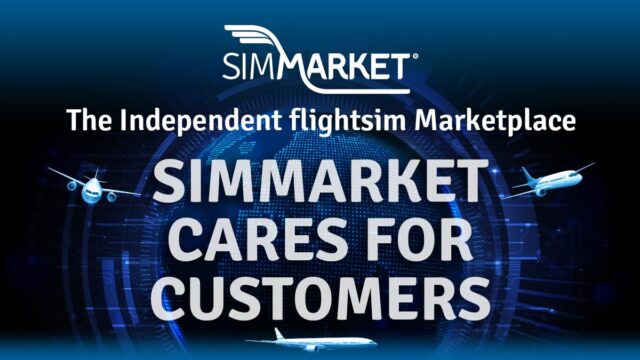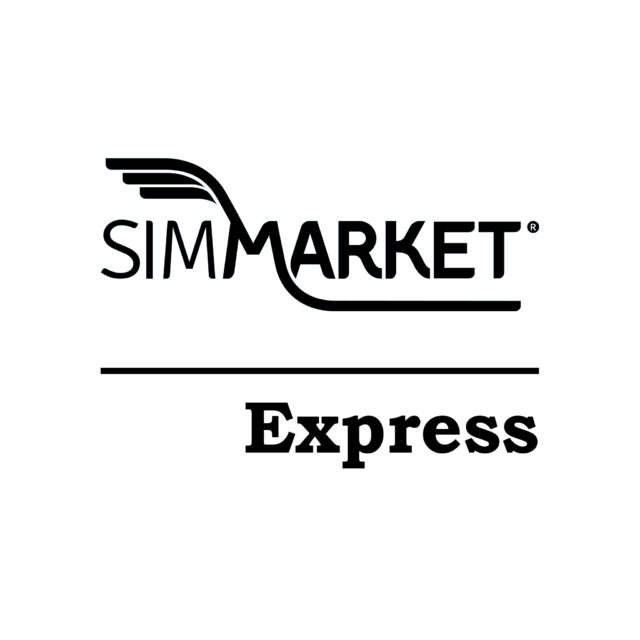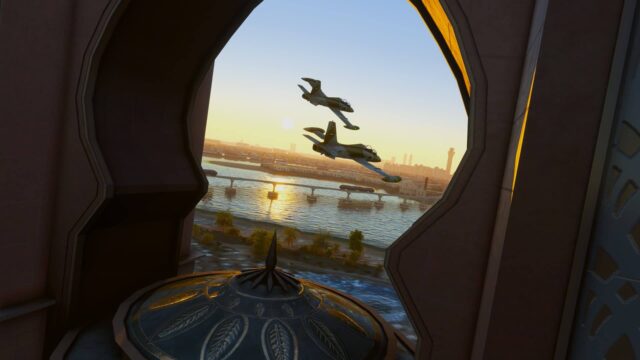Al Peletier’s Round Robin Adventure: Scheduled CP Air (Canadian Pacific) from Vancouver (CYVR) Canada, to San Francisco (KSFO) USA. This article was originally published in Computer Pilot Magazine in 2007 (www.computerpilot.com). It is based on an actual route that CP air used to fly between Vancouver Canada and SFO USA. Please note that it was written with the way Flight Sim was in 2007 and I haven’t changed anything.
Please enjoy!
If you have undertaken previous Round Robins, skip the next paragraph, jump right in, and have fun. For those who are new to this, Round Robins are published with the intent of having Flight-Simmers fly, look at the scenery, refresh our Geography, practice our cross country navigation, perform approaches at different airports all over the world, and have some FUN. In the message, you will be receiving info like: airport departure and runway number, VOR’S and NDB’s enroute, two or three middle airport destinations, for VFR or INST approach, and back to your point of departure (Round Robin). You will also be given ILS and LOM freq., minimums, procedures etc. and a little background on the geography of the area. After you fly a few of these, you will have a much better command and understanding of the different types of published procedures. You will learn to handle a lot of information in a very short time, while still maintaining control of your aircraft.
Round Robin adventure: Scheduled CP Air (Canadian Pacific) from Vancouver (CYVR) Canada, to San Francisco (KSFO) USA. This is a trip back in time for me. Besides being a Flight Simmer, I am also an Airplane model collector (I have over 250 models mostly in the 1:100, 1:72 and 1:50 scale). CP Air had one of the most distinctive liveries, and is very dear to any Canadian airplane spotter, collector or Flight Simmer. After stumbling on a Virtual Airline web site, totally dedicated to CP Air, and finding liveries for all the airplanes that CP Air flew, I decided to replicate an old CP air route. Finding these old liveries was very nostalgic for an old airplane collector like me. I couldn’t help but to contact the CEO of this VA, Bruce Wood, to find out how they had come about to create this VA. I urge you to visit this VA, and see what Bruce Wood, Stephen Schliederer and their Pilots are doing. You’ll find them at www.cpairva.com I have included a memo, at the end of this article, written by the CEO Bruce Wood. It is very interesting and explains in details the birth of a Virtual Airline.
Great add-ons for this flight: (Most freeware files can be found at www.flightsim.com or www.avsim.com)Aircraft and Panel (Payware):
SCENERY (Payware): Again I was spoiled by my good friend Justin Tyme at FSGENESIS with awesome textures for the USA and Canada. (www.fsgenesis.com) I also used the VANCOUVER Part 1 Scenery available at www.simmarket.com and the Mega Scenery San Francisco available at www.simmarket.com. SCENERY (Freeware):
|
(A lot of notes regarding ATC will pertain only to FS2002\FS2004\FS-X users)
May I suggest, that you READ the route a couple of times before starting out, so that you’ll have the flight plan fairly clear in your mind. Especially in a fast medium or large jet aircraft, there isn’t much time to spare and definitely no room for errors.
The scenario and tasking for this exercise: We are flying a scheduled flight for CP Air, from Vancouver to San Francisco. We have a full passenger load. You can fly this route with the Boeing 737-200/300, the Boeing 727-100/200 or a DC-10/DC-8. All airplanes that CP Air operated in the 60’s to the 80’s. You can also fly this route with either FS2002/FS2004 or FS-X or any other flight simulator with the necessary NAVAIDS.
To make the article authentic, we are only flying to one airport for this Round Robin. It is a fairly lengthy flight and will take you about 2.5 hours for each leg. The flight down to KSFO is Day IFR and the return flight to YVR is Night IFR. I have uploaded some great charts, they are shown below.
Round Robin Adventure: Vancouver International Airport (CYVR >>> San Francisco Intl Airport (KSFO)>>>> Vancouver Intl Airport (CYVR) Approx total distance 1500 nm.
NOTE: For the purpose of these exercises, we will assume that we are receiving Radar vectors to different VOR’s or ILS interception points. In the “Real” world of today, aircraft usually receive vectors to the interception points, to ensure proper separation. I’m also assuming that you will have a good look at the Approach plates for each segment.
One more note. If you are using ATC for take off, taxi and landings, you might be given different RWY or taxi way, depending on the weather. You might even input the whole trip in a FS flight plan and fly it that way.
BEGIN
LEG :Vancouver Intl (CYVR) >>> San Francisco Intl (KSFO) Approx 760 nm).
- Select Vancouver CYVR gate heavy. Season summer, clock to 0700L. Weather at your discretion. We will be using RWY 26L for departure and RWY 28R for the arrival at SFO.
- Dial in the VANCOUVER (YVR) VOR frequency 115.90 on NAV1 and the TATOOSH (NEAH BAY) (TOU) VOR frequency 112.20 on NAV 2.
- Taxi to and Take off (T/O) RWY 26L for a “Vancouver Three Departure”. Climb RWY heading to 7000, until 30nm out on the YVR VOR. Then a left hand turn to HDG 190 to track the TATOOSH VOR to on top and continue climbing to 29,000.
- Over the TATOOSH VOR turn left HDG 146. Dial in and track the HOQUIAM (HQM) VOR frequency 117.70 to on top. (we are now riding Airways J501)
- On top the HOQUIAM VOR turn left HDG 151. Dial in and track the ROGHE VALLEY (MEDFORD) (OED) VOR frequency 113.60 to on top (no reception for about 60nm)
- Over the ROGUE VALLEY VOR dial in and track the RED BLUFF (RBL) VOR frequency 115.70 to on top.
- Enroute, dial in the LOC I-GWQ frequency 111.7 and set course 283 in preparation for an ILS to RWY 28R at SFO (Actual course 283, RWY length 10602, elevation 13)
- Over the RED BLUFF VOR turn left HDG 164. Dial in and track the OAKLAND (OAK) VOR frequency 116.80.
- 75nm out of OAKLAND begin descent to 4000.
NOTE: A little tip on distances required for descent (assuming there are no mountains in the way) Try the 3 to 1 rule:
a) we are at 29,000
b) we want to be at 4000 over the OAK VOR
29,000 minus 4000 = 25,000.
c) Multiply 25×3 = 75 (forget the zero’s)
d) So we will need 75nm for our descent. I throttled back on the B727 and added spoilers to slow down to about 240kts and this seemed to work fairly well. - Over the OAKLAND VOR turn left HDG 138 (see approach plate) to the DUMBA intersection located on the OAK 138 radial at 14.7 nm.
- Over DUMBA turn left HDG 103 and maintain for 1 minute at approach speed followed by a left hand turn to HDG 283 to intercept the LOC. You can use the SFO VOR frequency 115.8 for DME information.
NOTE: I have included another approach plate called a “Quiet Bridge Visual Approach”. It uses the LOM/NDB BRIJJ (SF) frequency 379.0. This is real neat if you want to go in visual without a full ILS. Nice to keep for pilot training also. - 5nm back, you are cleared for a full stop to RWY 28R at San Francisco Airport. Check gear down.
Land at San Francisco and take first available left to terminal.
LEG 2: San Francisco Intl (KSFO) >>>> Vancouver Intl (CYVR) approx distance 760 nm
- Clock to 2000L. Weather at your discretion. For the winds, we will be departing SFO on RWY 28L and arriving at YVR on RWY 26L.
- Dial in the POINT REYES (PYE) VOR frequency 113.70 on NAV 2 and the SAN Francisco (SFO) VOR frequency 115.80 on NAV 1.
- Taxi to and T/O RWY 28L, climb RWY HDG to 5000 until 12nm out of the SFO VOR, then a right hand turn to HDG 316, continue climb to 32,000 and track the PYE VOR to on top.
- Over the PYE VOR turn right HDG 357. Dial in and track the RED BLUFF (RBL) VOR frequency 115.70 to on top.
- Over the RBL VOR turn left HDG 330. Dial in and track the ROGUE VALLEY (MEDFORD) (OED) VOR frequency 113.60 to on top. (We are now riding Airways J126)
- Over the OED VOR dial in and track the EUGENE (EUG) VOR frequency 112.90 to on top.
- On top the EUG VOR turn right HDG 349. Dial in and track the NEWBERG (UBG) VOR frequency 117.40 to on top.
- Over the UBG VOR dial in and track the OLYMPIA (OLM) VOR frequency 113.40 to on top.
- Enroute, dial in the LOC IFZ frequency 110.70 and set course 261 on your NAV 1 OBI in preparation for an ILS to RWY 26L at YVR (actual course 261, RWY length 11,500 and elevation 14). We will be arriving via a “GARTH ONE ARRIVAL”. Please see both the approach plate and STAR.
Normally at YVR, they use RWY 26R for arrivals from the East. I couldn’t use that one because FS2004 has the wrong frequency. If you would like to give it a go the frequency for FS2004 is 110.55 course 261 and for FS-X 111.95 and course also 261. (MS got it right with FS-X). (Abacus’s Co-Pilot V3.5 figured this out for me. Great program!) - Over the OLYMPIA VOR, dial and track the PAINE (EVERETT) (PAE) VOR frequency 110.60 to on top.
- 30nm out of the PAE VOR begin descent to 6000. (Do not descend below 6000 until over the HUH VOR. Mountain in the way)
- Over the PAE VOR turn left HDG 328. Dial in and track the WHATCOM (HUH) VOR frequency 113.00 to on top.
- Over the HUH VOR turn left HDG 304, and begin descent to 3000. Maintain HDG 304 until 14.6 nm passed HUH. This takes us to intersection BOGGI to intercept the ILS (See approach plate and STAR)
- Continue with the approach
- 5nm back, you are cleared for a full stop to RWY 26L at YVR. Check gear down and locked.
Land at Vancouver and take first left to terminal
Welcome home
END
Useful Files: YVR_Three_Departure.pdf







